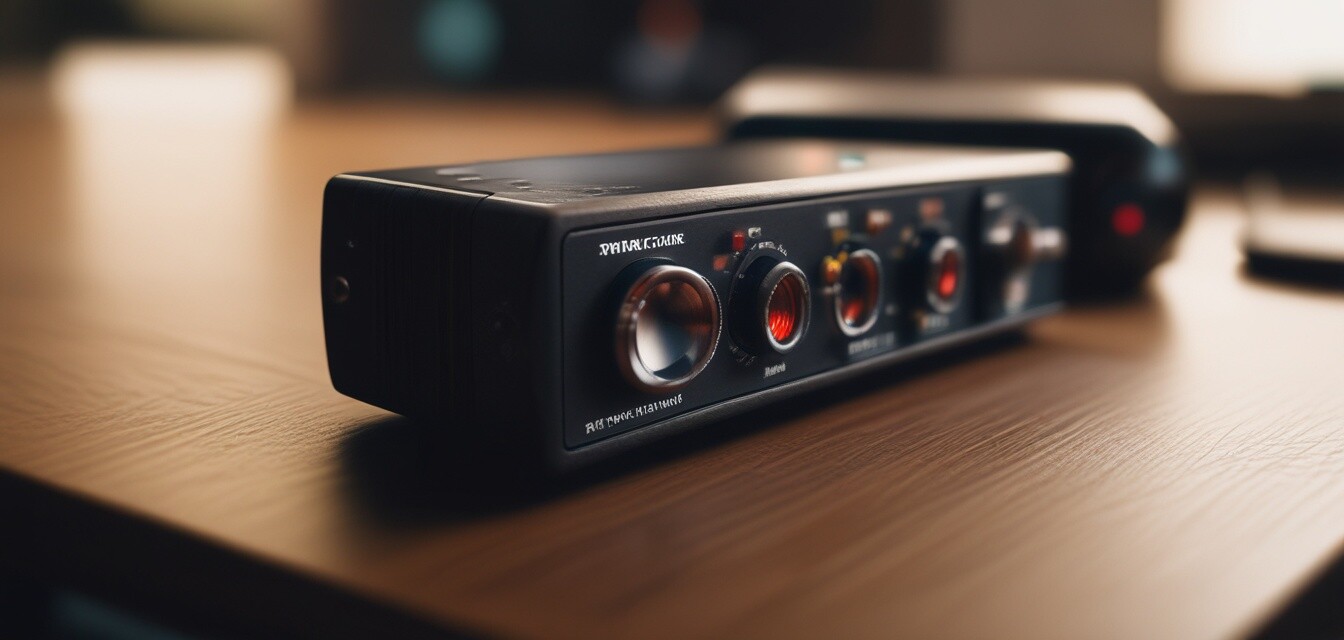
How to Select the Best Audio Interface for Recording
Key Takeaways
- Understand essential features like connectivity, sound quality, and portability.
- Evaluate the number of inputs and outputs based on your recording needs.
- Look for interfaces that offer low latency for a smoother recording experience.
- Consider your budget, but remember that quality often comes at a cost.
- Read product reviews to gauge real-world performance and reliability.
Choosing the right audio interface is crucial for anyone looking to record high-quality audio at home. Whether you're a musician, podcast creator, or voice-over artist, the right gear will significantly impact your sound quality. Below is a comprehensive guide to help you make an informed decision.
Understanding Audio Interfaces
An audio interface serves as the bridge between your instruments/microphones and your computer. It converts analog signals into digital data for recording and processing. Here are some key features to consider when selecting an interface:
Key Features to Look For
- Connectivity: Ensure that the interface you choose has the necessary input/output options, such as USB, FireWire, or Thunderbolt.
- Sound Quality: Look for interfaces that support higher sample rates and bit depths for clearer audio.
- Number of Inputs/Outputs: Depending on your needs, select an audio interface with the appropriate number of inputs and outputs.
- Low Latency: A low-latency interface allows for real-time monitoring without delays.
- Portability: If you travel frequently, consider a compact and lightweight model.
Types of Audio Interfaces
There are several types of audio interfaces available, each catering to different recording needs:
| Type | Description | Best For |
|---|---|---|
| USB Interfaces | Easily connects to computers and provides sufficient power for most uses. | General home recording, beginner setups. |
| Thunderbolt Interfaces | Offers faster data transfer speeds compared to USB. | Professionals needing high-performance and low latency. |
| FireWire Interfaces | Similar benefits to Thunderbolt but less common nowadays. | Users with older equipment. |
How Many Inputs and Outputs Do You Need?
The number of inputs and outputs you require will greatly depend on your recording setup. For instance:
- Solo musicians: 1-2 inputs are typically sufficient for instruments and vocals.
- Bands: 4 or more inputs may be necessary to capture several instruments simultaneously.
- Podcasts: 2-4 inputs can accommodate multiple speakers with ease.
Recommendations for Great Audio Interfaces
Here are some top recommendations for audio interfaces:
TOPTRO TR27 Mini Projector
A portable projector that supports 4K resolution and is ideal for a variety of uses including home cinema and education.
Learn MoreBelow are some more excellent models for different budgets:
- Focusrite Scarlett 2i2: A popular choice for its value and versatility.
- PreSonus AudioBox USB: Great for beginners with its user-friendly design.
- Universal Audio Apollo Twin: A premium option for professional-grade recordings.
Conclusion
Selecting the best audio interface involves understanding your recording needs and the features that will best support them. Keep in mind the recommendations shared in this guide, and don't forget to assess product reviews to gauge real-world performance. By doing so, you’ll set yourself up for recording success.
Tips for Beginners
- Start with a budget interface that meets your basic needs.
- Experiment with different inputs and outputs to find your perfect setup.
- Always keep your software and drivers updated for the best performance.
Pros
- Improved sound quality.
- Greater flexibility for connecting different devices.
- Enhancement of your recording workflow.
Cons
- Can be pricey for high-end models.
- Learning curve for settings and features.
- Extra equipment needed (cables, microphones).
For more insightful articles and guidance, check out our How-to Guides section.

